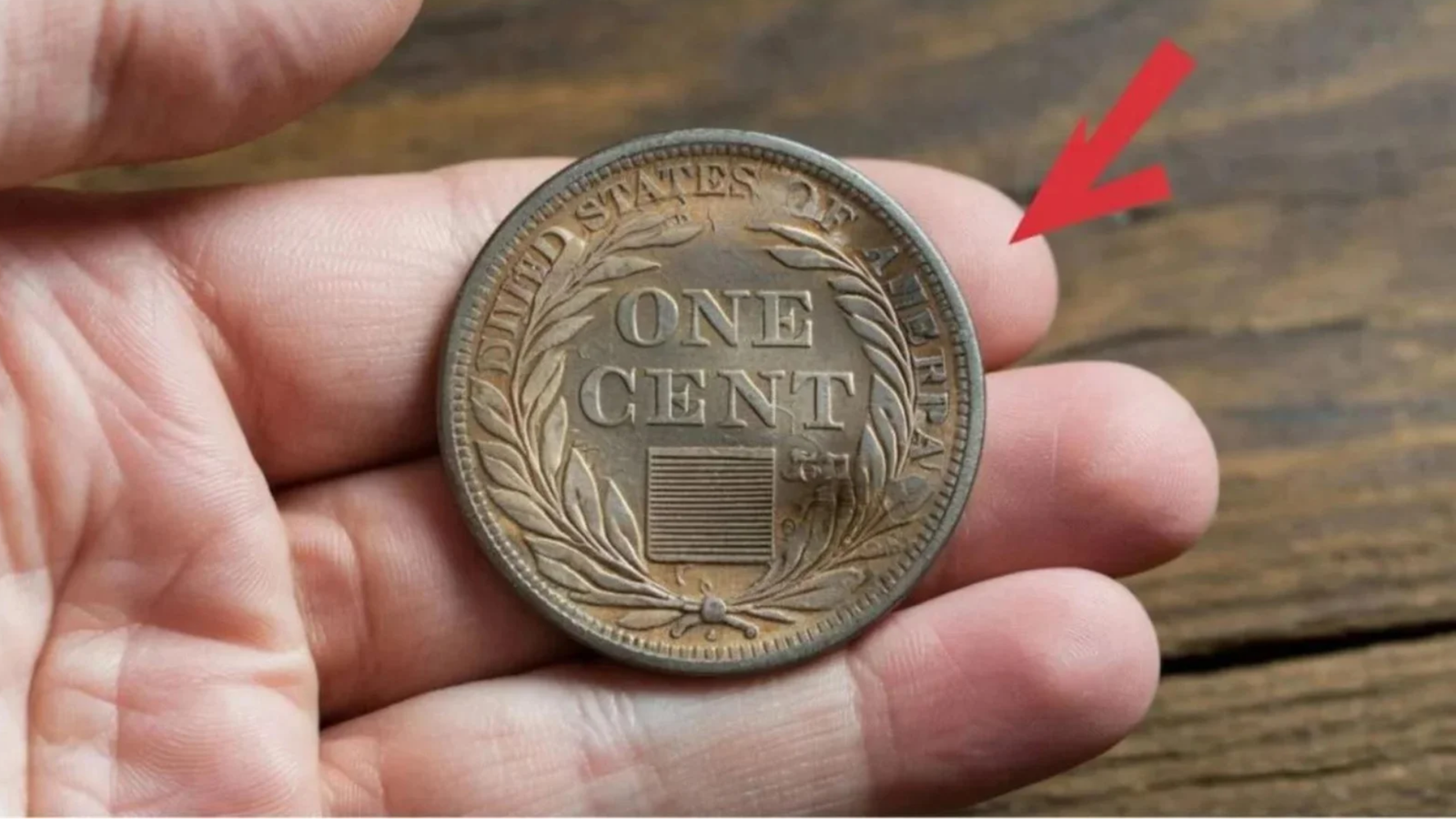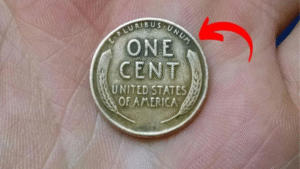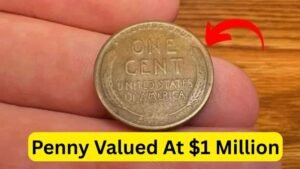The Value of Wheat Penny by Year: Discover the exciting world of wheat pennies, the classic Lincoln cents produced from 1909 to 1958. These small coins, featuring wheat stalks on the back, hold big appeal for collectors. Values can start at just a few cents for common ones but soar to over a million dollars for rare finds. This 2025 guide breaks down wheat penny values by year, tips for spotting valuables, and more to help you start or grow your collection.
What Are Wheat Pennies?
Wheat pennies, also known as Lincoln wheat cents, are one-cent coins made by the U.S. Mint. They show President Abraham Lincoln on the front and two wheat stalks on the back. The design ran for 50 years, from 1909 to 1958, before changing to the Lincoln Memorial.
These coins were everyday money back then, but today, they’re popular with hobbyists. Most are made of copper, except for some wartime versions in 1943 that used steel to save metal. A few rare 1943 pennies were accidentally made in bronze, making them super valuable.
Collecting wheat pennies is fun and can be rewarding. You might find them in old jars, coin rolls, or at garage sales. Knowing their worth helps you decide if they’re just pocket change or hidden gems.
Factors That Affect Wheat Penny Values
Several things decide how much a wheat penny is worth. It’s not just about the year; other details matter too.
Coin Condition
The shape of the coin plays a big role. Experts grade them from poor (worn out) to mint state (like new). A shiny, uncirculated penny can be worth way more than a scratched one. For example, a common 1940s wheat penny in average shape might fetch 5 to 10 cents, but in top condition, it could go for $1 or more.
Rarity and Key Dates
Some years had fewer coins made, so they’re harder to find. These “key dates” drive up prices. Mint marks—tiny letters showing where the coin was made (like “D” for Denver or “S” for San Francisco)—also count. No mark means it came from Philadelphia.
Errors and Varieties
Mistakes during minting, like double stamping or wrong metal, create rare varieties. These can turn an ordinary penny into a collector’s dream.
Wheat Penny Value by Year: A Detailed Chart
To make it easy, here’s a table showing average values for key wheat penny years in good condition (worn but details visible) and mint state (near perfect). Values are based on 2025 market trends from sources like PCGS and USA Coin Book. Common years not listed are usually worth 2 to 50 cents in average shape. Prices can change, so check current auctions for exact figures.
| Year | Mint Mark | Good Condition Value | Mint State Value | Notes |
|---|---|---|---|---|
| 1909 | None | $4 | $20 | First year, VDB designer initials on some. |
| 1909 | S | $80 | $300 | Rare San Francisco mint. |
| 1909 | S VDB | $600 | $2,000+ | Famous key date with initials. |
| 1910 | S | $15 | $100 | Low mintage. |
| 1911 | D | $5 | $50 | Denver mint. |
| 1914 | D | $150 | $2,500+ | Very rare. |
| 1916 | D | $2 | $30 | Common but collectible. |
| 1922 | Plain (No D) | $500 | $10,000+ | Error coin without mint mark. |
| 1924 | D | $30 | $200 | Semi-key date. |
| 1931 | S | $60 | $150 | Low production year. |
| 1933 | D | $2 | $20 | Depression-era low mintage. |
| 1943 | Steel (No Mark) | $0.20 | $5 | Wartime steel version. |
| 1943 | Bronze (Error) | $100,000+ | $1,000,000+ | Ultra-rare mistake. |
| 1944 | D | $0.05 | $2 | Common post-war. |
| 1955 | Double Die | $1,000 | $20,000+ | Famous error with doubled date. |
| 1958 | None | $0.05 | $1 | Last year of wheat design. |
This chart covers highlights. For full lists, visit coin grading sites. Remember, professional grading from services like PCGS or NGC can boost a coin’s sale price.
Top Rare Wheat Pennies to Hunt For
If you’re searching for big wins, focus on these standout coins. Here’s a bullet-point list of the most valuable ones in 2025:
- 1909-S VDB: The holy grail for beginners. In top shape, it can sell for over $100,000. Look for the “VDB” initials on the back.
- 1914-D: Only about 1.2 million made. Even worn ones go for $200 or more.
- 1922 Plain: A Denver mint error without the “D”. Values start at $700 for average condition.
- 1931-S: Minted during the Great Depression, fewer than 866,000 produced. Worth $100+ in fine shape.
- 1943 Bronze: Most 1943 pennies are steel, but a handful are bronze by accident. One sold for $1.7 million recently.
- 1944 Steel: Another wartime error—steel instead of copper. Can fetch $50,000+.
- 1955 Double Die Obverse: The date looks doubled. High-grade examples hit $25,000.
- 1958 Double Die: Rare variety from the final year, valued at $100 to $1,000.
These rarities often come from low mintage or minting goofs. Always check your pennies under a magnifying glass for these features.
How to Start Collecting and Valuing Your Wheat Pennies
Getting into wheat penny collecting is simple. Begin by sorting your loose change or buying rolls from banks. Use a coin folder to organize by year and mint.
To value them:
- Identify the year and mint mark (under the date).
- Check condition: Use online guides or apps for grading.
- Look for errors: Doubled letters, off-center strikes, or wrong metal.
- Get appraised: For potential valuables, send to a grading service.
- Sell smart: Use eBay, coin shows, or dealers for the best prices.
Store coins in protective holders to keep them safe from damage. Joining a coin club can teach you more and connect you with other collectors.
Conclusion
Wheat pennies offer a window into American history and a chance for exciting discoveries. From common 1940s cents worth pennies to rare 1909-S VDBs fetching thousands, their values reward patient hunters. In 2025, with rising interest in numismatics, now’s a great time to dive in. Whether you’re a newbie or seasoned collector, use this guide to spot treasures. Happy hunting—your next valuable find might be closer than you think!
FAQ
What is the most valuable wheat penny?
The 1943 bronze wheat penny tops the list, with values up to $1.7 million in top condition due to its rarity as a minting error.
How can I tell if my wheat penny is rare?
Check the year, mint mark, and condition. Key dates like 1909-S VDB or 1914-D are rare. Look for errors like double dies or wrong metals.
Are all wheat pennies worth money?
No, most common years (like 1940-1958 without mint marks) are worth 2-50 cents. Value comes from rarity, condition, and errors.
Where can I sell my wheat pennies?
Try online marketplaces like eBay, local coin shops, or auction houses. Get them graded first for higher prices.
Do wheat pennies contain real wheat?
No, the name comes from the wheat stalk design on the back, not actual wheat inside the coin.




